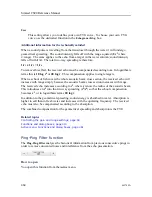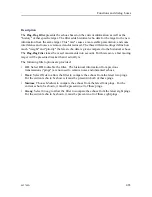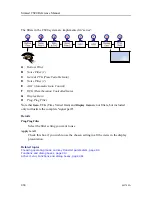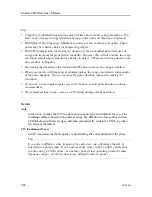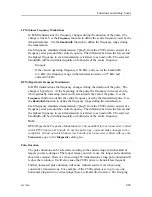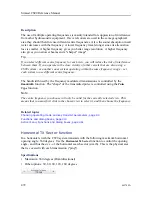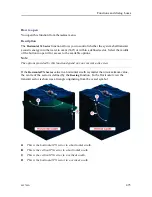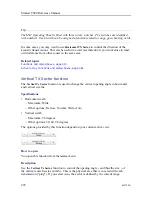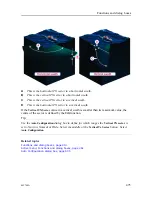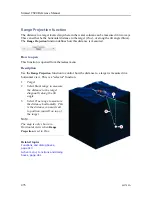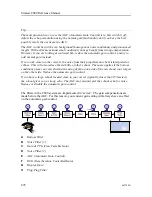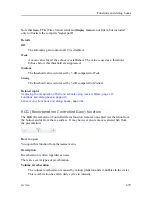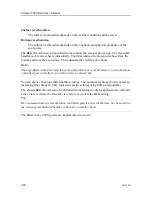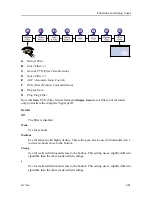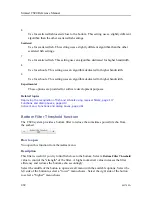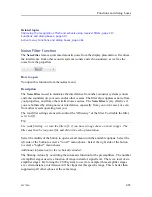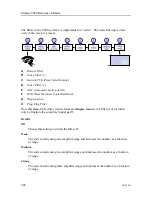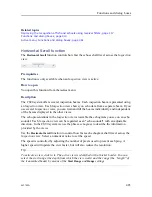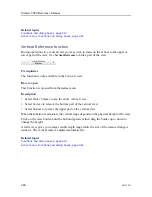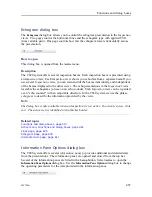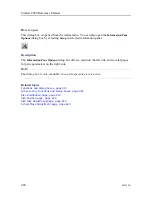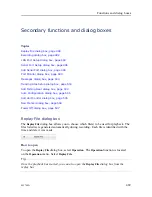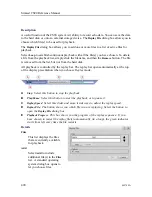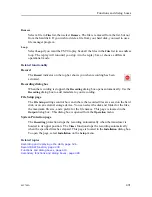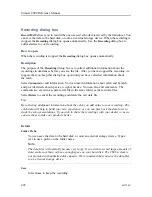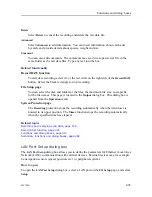
478
442700/A
Tip
The most practical way to use the AGC (Automatic Gain Control) is to first switch it off.
Adjust the echo presentation using the normal gain functionality until you have the best
possible result, then activate the AGC.
The AGC works best with even background (homogenous noise conditions) and pronounced
targets. With uniform environmental conditions you may benefit from strong compensation.
However, if you are looking at scattered fish, reduce the automatic gain control, and try to
add normal gain instead.
If you work close to other vessels, the noise from their propellers may be misinterpreted as
echoes. This will also reduce the visibility of other echoes. The same applies if the bottom
conditions place your vessel with decreasing depth on one side of the vessel and your targets
on the other side. Reduce the automatic gain control.
If you have a large school located close to your vessel (typically closer than 150 meters)
the school gives you a strong echo. The AGC may misinterpret the school echo for noise.
Reduce or disable the automatic gain control.
The filters in the CS90 system are implemented in “series”. The gain compensations are
made before the AGC. For this reason, your current gain setting will always have an effect
on the automatic gain control.
A
Bottom Filter
B
Noise Filter (1)
C
Gain & TVG (Time Variable Gain)
D
Noise Filter (2)
E
AGC (Automatic Gain Control)
F
RCG (Reverberation Controlled Gain)
G
Display Gain
H
Ping-Ping Filter
Simrad CS90 Reference Manual
Summary of Contents for Simrad CS90
Page 1: ...kongsberg com simrad Simrad CS90 REFERENCE MANUAL ...
Page 2: ......
Page 627: ...442700 A 625 Related topics Concept descriptions page 622 Concept descriptions ...
Page 683: ......
Page 684: ... 2021 Kongsberg Maritime ISBN 978 82 8066 213 2 ...
Page 685: ......
Page 686: ...Reference Manual Simrad CS90 ...

